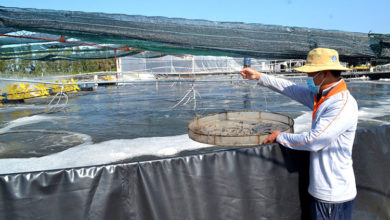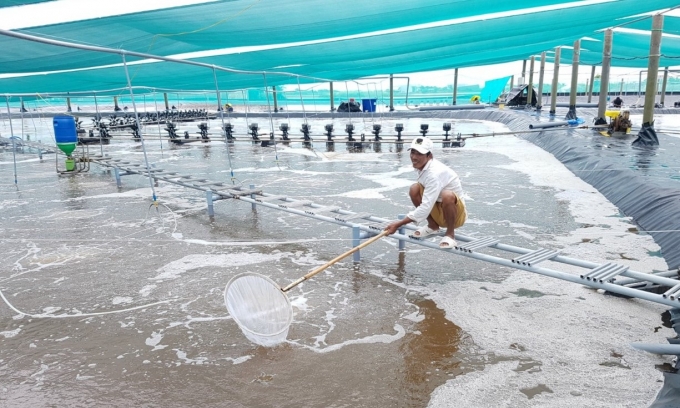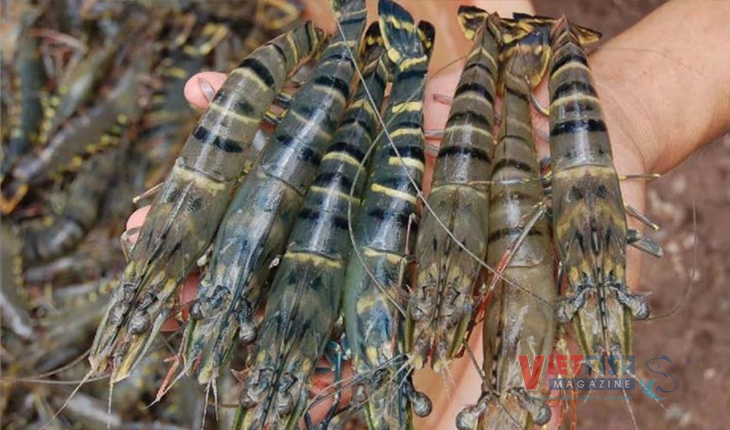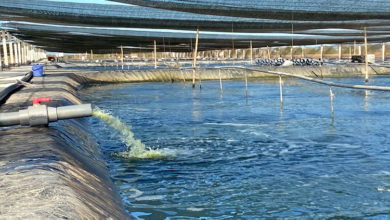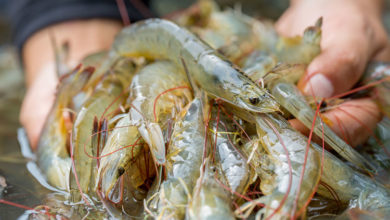Dr. Nguyen Duy Hoa: “At Cargill, we choose to stand by the farmers!”
In an interview with Dr. Nguyen Duy Hoa, Global Technical Director for Empyreal products at Cargill Inc. Vietnam Fisheries Magazine had an opportunity to discuss strategies for optimizing shrimp production costs in Vietnam, along with the challenges and opportunities faced by the country's shrimp industry.
VFM: With extensive experience operating in 70 countries, Cargill has achieved remarkable success in providing animal nutrition solutions. Could you share some of the company’s notable achievements?
Dr. Nguyen Duy Hoa: “Our success is tied to the success of our customers and farmers.” This core philosophy has guided Cargill throughout 120 years of growth in the animal nutrition industry. From a modest feed production facility in the U.S. Midwest, Cargill has evolved into a global enterprise, offering products and services to farms, feed producers, distributors, and small-scale farmers alike.

With over 20,000 employees across 280 facilities in 40 countries, Cargill produces nearly 18 million tons of feed annually, indirectly or directly contributing to the nourishment of over a billion people daily. This achievement reflects not only our production capacity but also our long-term vision for sustainable development.
Specifically in aquaculture, Cargill has reached numerous milestones. By 2030, the company aims to reduce at least 30% of carbon emissions from farmed salmon products, working closely with salmon farmers and suppliers to optimize the value chain. In 2023, Cargill expanded regenerative farming practices, cutting CO2 emissions by 15,000 tons, 15 times more than the previous year.
Cargill’s commitment to sustainability is also evident in its support for the Fisheries Improvement Fund (FIP), founded by Finance Earth and WWF. Currently, 84% of Cargill’s marine ingredients are sourced from certified supply chains or FIPs. To diversify resources and reduce dependency on marine inputs, Cargill actively utilizes insect meal, algae oil, and innovative packaging solutions to minimize plastic waste.
One standout innovation is the FLOW technology, which optimizes nutrition in feed pellets, reducing nutrient loss to water by up to 50%, resulting in exceptional aquaculture efficiency.
Beyond global aquaculture contributions, Cargill remains dedicated to fostering sustainable development in markets like Vietnam. Through innovation and social responsibility, Cargill not only delivers better nutrition solutions but also helps enhance productivity, profitability, and quality of life for farmers.
Cargill continues to affirm its pioneering role in the animal nutrition industry, with the success of its customers driving its sustainable growth.
VFM: What factors hinder the sustainable development of Vietnam’s aquaculture feed industry, and what improvements are necessary to overcome these barriers?
Dr. Nguyen Duy Hoa: While Vietnam’s aquaculture feed industry is thriving, FDI enterprises from China and Taiwan dominate over 80% of the market. In contrast, FDI firms from other countries, including Cargill, lead in livestock and poultry feed sectors.
Although there are not many significant barriers to growth, ensuring sustainability, environmental friendliness, and compliance with increasingly stringent export standards are critical. We need to focus on several key areas:
- Researching local raw materials: Develop inputs from aquaculture byproducts such as shrimp and fish hydrolysates, pangasius meal, and agricultural byproducts like rice bran, corn, fruit residues, insect meal, and herbal extracts.
- Calculating CO2 values for raw materials: Building CO2 values for feed ingredients allows carbon credits to be integrated into feed production formulas, contributing to sustainability goals.
- Establishing national feed standards: Develop national standards for aquaculture feed to ensure animal health safety and support disease management strategies.
- Streamlining supply chains: Reducing intermediaries in the aquaculture feed supply chain will allow farmers to access feed directly from manufacturers. Enhanced credit systems and support policies will reduce costs and increase the competitiveness of Vietnamese aquaculture products globally.
By addressing these issues, the aquaculture feed industry will not only achieve sustainable growth but also enhance competitiveness and meet increasing export market demands.
VFM: Compared to countries like Ecuador and India, Vietnam’s shrimp production costs are significantly higher, partly due to feed costs. How can feed manufacturers contribute to reducing costs and boosting the competitiveness of Vietnam’s shrimp sector on the international stage?
Dr. Nguyen Duy Hoa: Feed typically accounts for 50% – 60% of production costs in all countries. However, shrimp production costs in Ecuador and India are lower than in Vietnam, even for similar shrimp sizes, due to:
- Lower stocking densities: Ecuador and India have lower stocking densities, allowing the use of lower-protein, cheaper feed. While their feed conversion ratios (FCR) are higher, their large farm areas enable partial reliance on natural feed in ponds.
- Reduced ancillary costs: Lower stocking densities reduce shrimp stress, minimizing medication and chemical expenses. Additionally, labor and utilities costs are lower in these countries due to larger farm sizes.
- Credit-related costs: Many Vietnamese shrimp farmers purchase feed and supplies on credit, leading to higher costs compared to cash payments. This significantly increases production costs in Vietnam.
To sustainably reduce shrimp production costs, Vietnamese farmers and feed manufacturers need to embrace high-quality and functional feeds. These feeds reduce FCR, shorten farming cycles, and improve success rates. Additionally, forming cooperatives and collaborating directly with feed manufacturers to build supply chains will lower costs and enhance competitiveness against countries like Ecuador and India.
VFM: What strategies does Cargill employ to optimize production costs while ensuring nutrition quality and shrimp health, and minimizing environmental impacts?
Dr. Nguyen Duy Hoa: At Cargill, we address these challenges through a holistic approach to shrimp farming based on three pillars: optimized nutrition, enhanced health, and sustainable farming practices.
We provide scientific and digital solutions to support shrimp farmers in Vietnam, promoting the use of extruded shrimp feeds. While production costs for extruded feeds are higher, their advantages include reduced dust, superior water stability, and minimized nutrient loss to the environment. This keeps pond water cleaner and reduces water treatment burdens, particularly under extreme weather conditions.
Our slow-sinking extruded pellets offer significant benefits, improving shrimp growth rates (ADG) by up to 10%, lowering FCR by 3% – 5%, and shortening farming cycles by about a week. These feeds yield high-quality shrimp with firm, dense meat, suitable for export processing. Extrusion technology also allows greater ingredient flexibility, enabling precise nutritional adjustments.
VFM: While other major feed suppliers are actively developing integrated value chains, why does Cargill remain focused on partnering directly with farmers?
Dr. Nguyen Duy Hoa: We understand that integrated value chains are important but believe they are not the sole path to success. In Vietnam, we employ a business model that engages broadly with farmers, acting as a trusted partner and delivering tangible value to help them succeed.
Our philosophy is simple: We choose to partner with farmers rather than compete with them in farming or aquaculture.
To achieve this, we invest in our nationwide team of salespeople, technicians, and nutrition consultants, equipping them to conduct on-site training, share technology, and offer effective farming solutions. This enables farmers to produce safely, responsibly, and sustainably.
Vietnam is a vital market for Cargill. As we approach our 30th anniversary in Vietnam in 2025, we remain confident and optimistic about future opportunities. We are committed to continued investments in production capacity, workforce development, and contributions to local communities as part of our global mission to nourish the world.
VFM: What are the advantages and challenges of using alternative proteins like insect meal and algae compared to traditional fishmeal?
Dr. Nguyen Duy Hoa: Fishmeal remains the most advantageous ingredient in terms of nutrition, palatability, and attractability. Nutritional components like cholesterol, phospholipids, peptides, nucleotides, and EPA/DHA/ARA are hard to replicate using alternatives such as insect meal, algae, or single-cell proteins.
However, alternative proteins offer significant environmental benefits, reducing dependence on fishmeal—a resource that is becoming increasingly scarce. Sustainable and innovative protein sources are crucial as overfishing depletes natural resources and threatens biodiversity.
The high production costs of alternative proteins pose a major challenge for widespread adoption in aquafeed. Nevertheless, rising sustainability standards, carbon credit demands, and fishmeal replacement pressures make these innovations essential for the industry’s future.
VFM: With VietShrimp 2025 approaching, what are your expectations for the event?
Dr. Nguyen Duy Hoa: VietShrimp has always been a compelling platform for shrimp farmers, connecting them with businesses from diverse sectors. It offers opportunities to exchange experiences, learn, and explore new solutions, products, and technologies.
Key issues such as rising production costs, declining shrimp prices, environmental challenges, and disease outbreaks are pressing concerns for Vietnam’s shrimp industry. I hope these topics will be thoroughly discussed, with effective solutions proposed to support the sustainable development of Vietnam’s shrimp sector.
Thank you for your insights!


